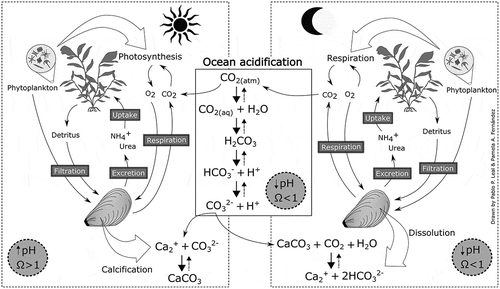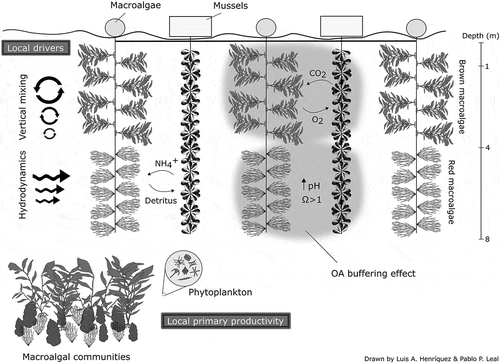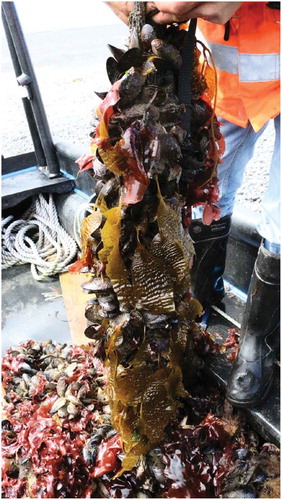Figures & data
Fig. 1. Conceptual diagram of possible interactions between macroalgae and mussels in co-culture under OA conditions. Seawater pH and aragonite saturation state (Ωarg) are reduced to unfavourable conditions for calcification. During daytime, macroalgal photosynthesis increases pH in surrounding seawater, counteracting OA effects on calcification. However, during nighttime, macroalgae and mussels release CO2 during respiration, contributing to OA conditions. This last condition can be different if appropriate culture proportions are previously determined in, for example, laboratory experiments. Moreover, photosynthetic O2 released during daytime and macroalgal detritus can benefit mussels metabolism, and excretion of NH4+, urea and CO2 can support macroalgal growth and photosynthesis. Mussels can also help control phytoplankton blooms by filtration. Note: arrow size indicates direction in which the reaction is favoured (nondashed, negative; dashed; positive).

Fig. 2. Schematic representation of co-culture of mussels and macroalgae and its possible relationship with local environment. In this co-culture system, mussels and macroalgae are alternately placed to take advantage of their respective metabolic products. For example, excretion of NH4+ and urea by mussels can be used by macroalgae and macroalgal detritus may feed mussels. OA buffering refuge created by macroalgal photosynthesis may benefit calcification of proximate cultured mussels. However, these interactions between co-cultured organisms can be affected by inherent species’ production rates and local drivers such hydrodynamics and vertical mixing.


